Cast iron pipes for outdoor sewage: types, features of application and installation
Cast iron pipes used in sewer networks continue to be relevant material. Despite the high competition of plastic, reliable pipelines designed for the long-term service are constructed from cast-iron products. They have both strengths and weaknesses that are worth exploring. Do you agree?
We will talk about which cast iron pipes for external sewage are ideally suited and which are used exclusively in laying the internal system. In our article, we present the features of marking, describe the types of joints in the assembly of cast-iron communications. Alternatives are also listed.
The content of the article:
High Strength Cast Iron Pipe
Design decisions to reduce pig iron in sewer networks are traditionally driven by economic considerations. As for reliability and durability - there are simply no materials equal to a cast-iron pipe.
Products made from ductile iron are widely used in the field of engineering, water supply, water disposal, as well as in the field of gas and oil production.
A significant proportion of this production is made up of cast iron high-strength pipes.
Their operational properties, in comparison with ordinary pipes, are supplemented by the following mechanical characteristics:
- high degree of impact strength;
- low yield strength;
- low temporary resistance;
- low coefficient of elongation.
Obtaining such characteristics was achieved due to the introduction of spheroidal (or lamellar) graphite into the structure of cast iron.
In other words, the metal structure is saturated with a significant amount of carbon, which in practical terms adds to the final products such properties as:
- wear resistance;
- compressive strength;
- fatigue strength;
- ease of machining;
- good casting qualities.
High-strength cast-iron pipes are mentioned for a reason. The implementation of external sewage projects usually involves the construction of drainage lines from structures with their laying under the soil. Such a sewage system is classified by the abbreviation TML.
The operation of sewage lines underground, as a rule, is characterized by increased physical and thermal stresses, which are easily handled by high-strength cast-iron pipes. Sewer Pipe Depth in the land is regulated by building codes.
Pipe classification by design
For sewer cast-iron pipes of the TML classification, there is a conditional division of them into two types according to their functional properties:
- Socketless (SML).
- Bell-shaped (SME).
The first are distinguished by the fact that they are structurally executed as exceptionally smooth elements from beginning to end along the entire length. The second, on the contrary, have at one end a slightly widened in diameter bell.
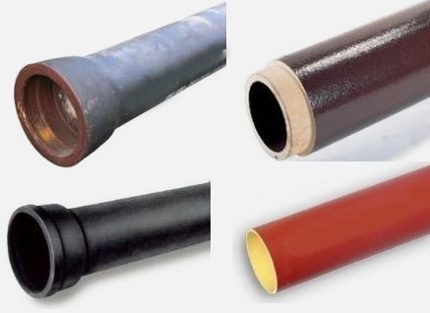
Socketless cast-iron pipes are considered the best option for installing outdoor sewer systems, classified as TML systems. Pipes of the SML type provide more convenience in laying conditions, and allow easy and quick dismantling if necessary.
Both types of pipes are available with a nominal size of inner diameter of 100 mm, while the size of the outer diameter is 110 mm. As a rule, nominal and any other diameter size is indicated by marking (for example - DN100).
Frequently practiced diameters of cast-iron pipes (bell-shaped and socketless) lie in the range of 100 - 400 mm. In general, this range covers diameters up to 1000 mm. The standard length is 3000 mm.
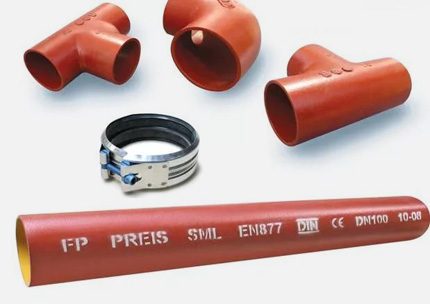
There are also products that belong to other classification groups. For example, SMU classification products are functionally designed for building drainage systems and drainage systems.
There are pipes for the transportation of chemical aggressive media. They are classified by MLK. And cast iron products under the MLB classifier are suitable for drainage systems on roads and bridges.
Features of the design and composition used when casting iron pipes are indicated in the marking:
How to connect pipes SML and SME?
Cast-iron-free sewer pipes made of cast iron are connected to one another using special tightening fixing devices. These connecting elements consist of a steel tightening collar and an elastic sleeve that is applied to the joint area.
In practice, two modifications of the steel clamp screed are used - one screw (CE) or two screws (CV). The material of the elastic coupling provides high quality tightness, and the properties of the steel tightening ring exclude the appearance of corrosion.
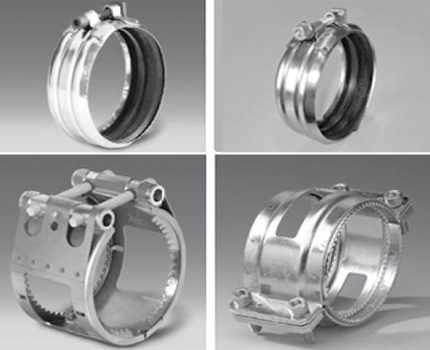
Connecting clamps are used not only for connecting individual pipes in the construction of the pipeline. The same components are used for joints with fittings.
Clamps are manufactured for various mounting diameters and are designed for the entire range of operating pressures. There are modifications of clamps with sound absorption effect used in the device silent sewage. Their installation does not require the use of additional sound insulation in the places of passage of pipelines through the ceiling.
Bell-shaped elements are connected by the principle of inserting a flat end of one pipe into the bell-shaped part of another. The softness of the connection and the tightness, as a rule, is ensured by a rubber ring, which is pressed into the groove on the inner surface of the socket of the cast-iron pipe.
There is also a scheme where the tightness of the connection in the socket (and softness) is achieved by filling the gap between the pipes with sealing material.
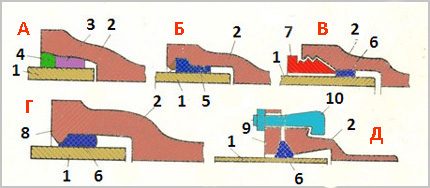
For bell-shaped elements, the following types of sealing and fixing of joints are characteristic:
- Chasing asbestos cement filler.
- Installation of a sealing cuff.
- Installation of a self-sealing ring.
- Use of bolt-on union flange.
- The use of a thorn tenon.
The method of fixing the pipe joint using hot and cold welding is also practiced, but it is used extremely rarely. This is explained by the complexity of cast iron welding technology. In addition, specialists in welding, professional welding tools and expensive nickel-based electrodes are required for the production of cast iron welding.
With features of the choice of pipes for the construction of an internal sewer system will introduce the article, which sets out in detail all the arguments and considers the characteristics of various types.
Features of the structure and application
The main feature of cast-iron pipes from the TML classifier group is the purpose for installation underground under a depth of 0.8 to 6 meters. Created specifically as elements of external TML systems, pipes are characterized by an increased degree of strength and corrosion protection.
The operational parameters of the compressive resistance make it possible to lay sewer lines without fear of damage, for example, under a roadway with heavy weight loads. But during installation, it is required to comply with DIN EN 877, 1610, GOST standards, which provide for the creation of an appropriate supporting foundation and floors.
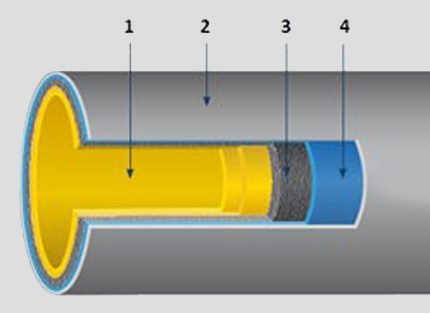
Among the features of high-strength cast-iron pipes, the presence of an effective coating (external and internal), including on shaped parts, should also be highlighted. The coating is carried out with the introduction of zinc and epoxy resins, which ensures high reliability of corrosion protection even in pronouncedly aggressive environments.
These pipes can be successfully used for laying in soils with high pH (0-10). The inner lacquered epoxy coating of cast iron sewer pipes has a smooth (sliding) structure, which minimizes the drag coefficient during the movement of effluents.
The structure of modern cast iron pipe TML:
- Coating with a modified epoxy resin in two layers (layer thickness 120 μm).
- Protective coating with epoxy varnish (layer thickness 60 μm).
- High carbon cast iron base layer.
- Protective coating with zinc powder (spray density 130 g / m2).
The standard pipe length (3000 mm) can be easily shortened to the required size if necessary, for example, with an electric pipe cutter. When trimming a cast-iron pipe, it is necessary to ensure an accurate even cut. This approach guarantees the reliability of sealing during the assembly of sewage lines.
In addition, the edges of the cutoff, as a rule, are painted with special paint and coated with insulation tape type Pro-Cut. For aggressive environments, special seals are used. These measures further increase and negate the risks of leaks.
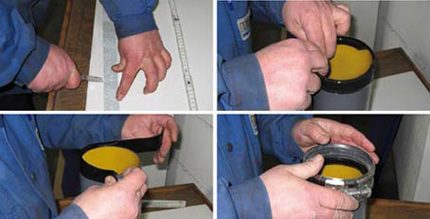
The list of features of cast-iron sewer pipes is impressive. Compared to the same polymer products, quickly gaining popularity due to cheapness, cast iron products have many advantages.
A fire-iron and high temperatures are not afraid of a cast iron, while plastic pipes soften already at T = 100º, and at higher temperatures they begin to deform and can melt.
Cast iron pipelines are characterized by low noise during the operation of the system and do not require the installation of expansion joints for expansion. They can be laid in the thickness of concrete without fear of rupture from compression / expansion of materials.
Thus, the acquisition costs will very soon be offset by the economical operation of cast iron pipes. Their application does not require the creation of fire and noise isolation, the overhaul period is several times greater than the same period for plastic communications. The duration of operation is not limited even to a 100-year period.
Pre-insulated products
The cast iron products of the TML classifier complement the products, which are pre-insulated cast iron pipes. Such modifications are successfully used in environmental conditions with low temperature values.
In fact, these are the same socketless or bell-shaped pipes of high strength (1), additionally coated with technological layers (2, 3, 4) of thermal insulation.
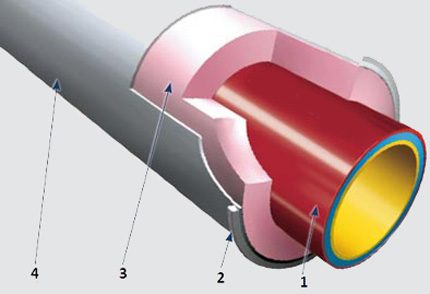
As effective heat insulator thermosetting foam (3) or a similar material is used, which has a dense structure and non-flammability properties according to class “A2”. The heat insulator is closed by a casing made of galvanized sheet steel (4). The thickness of the casing sheet is at least 1 mm. The casing is fixed with clamps (2), also made of galvanized steel.
Pre-insulated cast iron pipes are designed for operation in humidity conditions up to 75%. Insulation prevents condensation at low and critically low temperatures. There are modifications with the introduction of a heating cable directly into the structure of the heat insulator.
Reasons to replace cast iron with polymers
What determines the increasing popularity polymer productswith which they seek to replace cast iron?
As it turns out, the main reasons are:
- risks of cast iron corrosion from damage by stray currents of electromagnetic fields;
- lack of additional protection of the inner walls of the pipes from aggressive environments;
- the rigidity of the products, positively affecting a single pipe, but provoking a shift in the total soil loads to the joints at a pipeline assembled from a dozen or more pipes;
- technical difficulties that inevitably appear during the repair process or in case of the creation of new communication inserts.
Polymer pipes are much more often than cast iron pipes used to create autonomous systems sewers in private homes.
You will learn from which pipes it is better to use in the construction of the outer part of the sewer system in a suburban area next articlededicated to this difficult question.
Conclusions and useful video on the topic
Some useful tips about choosing pipes will be useful for creating DIY sewage systems:
Meanwhile, polymer products are inferior in technical and operational terms to products made of cast iron. They have significantly more disadvantages compared to cast-iron sewer pipes.
It is convenient and rational to use polymers in domestic sewage systems, but for serious external communications it is reasonable to use cast iron from any point of view.
Do you have useful information on the device of external sewage made of cast-iron pipes? Want to talk about how you built the system on your site? Please write comments in the block below, post a photo on the topic of the article, ask questions.

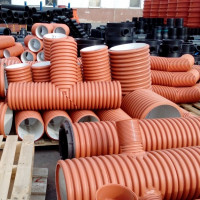 Corrugated pipes for external sewage: types, rules and standards of application
Corrugated pipes for external sewage: types, rules and standards of application 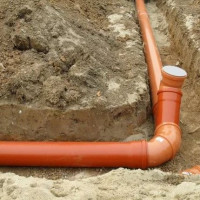 Sewer pipes for outdoor sewers: types and overview of the best brands
Sewer pipes for outdoor sewers: types and overview of the best brands 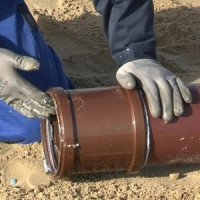 PVC pipes for outdoor sewage: types, sizes, advantages and disadvantages
PVC pipes for outdoor sewage: types, sizes, advantages and disadvantages 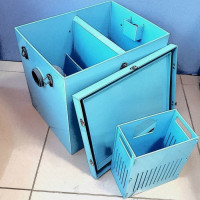 Grease trap for washing: operating principle, types of structures and features of their installation
Grease trap for washing: operating principle, types of structures and features of their installation 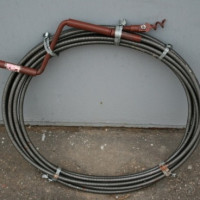 Sewer cleaning cable: types of tools and how to use them correctly
Sewer cleaning cable: types of tools and how to use them correctly  The smell from the sewer in the apartment: types of technical malfunctions and methods for their elimination
The smell from the sewer in the apartment: types of technical malfunctions and methods for their elimination  How much does it cost to connect gas to a private house: the price of organizing gas supply
How much does it cost to connect gas to a private house: the price of organizing gas supply  The best washing machines with dryer: model rating and customer tips
The best washing machines with dryer: model rating and customer tips  What is the color temperature of light and the nuances of choosing the temperature of the lamps to suit your needs
What is the color temperature of light and the nuances of choosing the temperature of the lamps to suit your needs  Replacement of a geyser in an apartment: replacement paperwork + basic norms and requirements
Replacement of a geyser in an apartment: replacement paperwork + basic norms and requirements
Definitely, in the field of sewage systems, cast-iron pipes are the best, they are beyond competition. Of course, the purchase of material for laying the pipeline will cost more, but still there is something to spend money on. I did not even consider plastic in choosing pipes for the construction of my sewage system, but immediately decided that I would take cast iron. The advantages of cast-iron pipes: fire resistance, resistance to aggressive environments and, perhaps, low noise. True, quite high requirements are imposed on the laying and installation, but the service life is many times higher than competing plastic.
And what's the use of cast iron fire resistance, if it is a sewer? Yes, and resistance to aggressive environments is not the same as that of PP pipes! Or am I wrong? I am already silent about future corrosion and the price of the issue!
As for the refractoriness of cast iron, I partially agree with you. There are, for example, areas at plants where the sewer pipeline will pass, then pig iron will be relevant. And for domestic purposes, it is quite possible to do with plastic pipes: cheaper and more practical.
Regarding resistance to aggressive environments, plastic pipes have a better indicator, only cast iron can better withstand mechanical stresses. As for corrosion, this is not a problem for sewer PP pipes, moreover, due to the smooth internal structure, they better pass flows. The latter eliminates the possibility of permanent blockages, which are a constant problem for cast iron pipes.